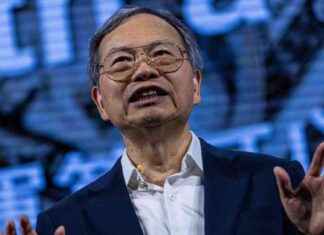The American workplace is broken.
5 Months Ago
7 Months Ago
8 Months Ago
Despite U.S. business managers’ best efforts, the vast majority of U.S. workers are disengaged or indifferent. That workplace ennui comes at a price for U.S. productivity — economic output per person — a fundamental workforce measure that peaked in the 1950s and 1960s. Productivity growth has been declining since then, U.S. Labor Department data show, despite the rise of such remarkable technologies as the Internet, the laptop and the smartphone, all intended to help people work smarter and faster.
"The U.S. — and the world at large — is in the midst of an employee engagement crisis." So says the Gallup organization’s latest "State of the American Workplace" report unveiled Wednesday.
What’s gone wrong? Gallup says the business world is failing its increasingly diverse workforce in an era when people want different things out of going to work.
"The very practice of management no longer works," warns Gallup CEO Jim Clifton in introducing the new 214-page workplace report. "The old ways — annual reviews, forced rankings, outdated competencies — no longer achieve the intended results."
Here’s how Gallup sees today’s American workforce, made up of more than 100 million full-time employees.
About a third (33 percent) of those employees are what Gallup calls "engaged" at work. "They love their jobs and make their organization and America better every day," the report states. If employers could find a way to double the percentage of engaged workers — from one third to two thirds of the U.S. workforce — then the nation’s waning productivity would be over, the Gallup report suggests. That, of course, is a tall order.
Raising the number of engaged workers does much more than produce a stronger workforce. Companies are in better shape to expand, hire more workers and increase wages. And, the Gallup report says, as people make more money, they tend to spend more, helping to advance the economy.
Today’s pace of consumer spending is still behind where it was in 2008. Gallup says consumer spending averages about $90 a day now, compared to $98 spent daily nine years ago.
At the other end of the worker engagement spectrum are 16 percent of U.S. employees who are "actively disengaged." These are the folks who are "miserable in the workplace and destroy what the most engaged employees build," the Gallup report states. The workforce report estimates that actively disengaged employees alone cost the United States from $483 billion to $605 billion each year in lost productivity.
Combining the 33 percent of the engaged and 16 percent of actively disengaged yields 49 percent of the workforce. Who’s left? The remaining 51 percent of employees who are simply not engaged, one way or the other.
Says Gallup: "They’re just there."
CEO Clifton criticizes traditional management as ineffective in countering this malaise. He asks: Do the country’s declining productivity numbers point to a need for "major workplace disruption"?
Gallup’s report considers itself a call to action. "The one thing leaders cannot do is nothing. They cannot wait for trends to pass them by, and they cannot wait for millennials to get older and start behaving like baby boomers."
Business leaders must define and convey their vision more clearly — and rally employees around it — the report urges. "Employees have little belief in their company’s leadership."
Fixing a broken workplace is possible, the report says. Businesses with more engaged workers typically have leaders who communicate well and often and share the mission of the company. They hold managers accountable not only for the bottom line but also for their efforts to train and develop workers, and to offer feedback and coaching.
In addition, companies with more-engaged workers make sure their employee goals are clear. Such companies also provide the resources to help employees reach those goals. Another key trait is providing workplace flexibility, whether it involves time or at-home options for employees to accomplish their tasks.
Workers want to feel like they are part of the mission. They often don’t.
"The modern workforce wants a job that feels meaningful," the Gallup report states. "They need to be able to see clearly how their role contributes to the success of their team and organization."
As the most recent generation to enter the workforce, millennials struggle with the highest rates of unemployment and underemployment. Those who hold full-time jobs often struggle to pay their bills.
The Gallup report, analyzing 195,600 employees, found that millennials are the least engaged of the generations now working. On the other hand, millennials also rank among the lowest percentage of actively disengaged employees. Millennials are pushing companies to see and manage their workforces differently. "They may feel like they are ‘waiting’ for their employers to catch up with them," the report states.
And if that doesn’t happen quickly enough? Millennials are off to the next opportunity.
The "State of the American Workforce" offers no guarantee that its insights will assure greater success, higher productivity or better talent retention. But it couldn’t hurt.
Concedes Gallup: "The modern workforce defies convention."
Contact Robert Trigaux at rtrigaux@tampabay.com. Follow @venturetampabay.
Our editors found this article on this site using Google and regenerated it for our readers.







